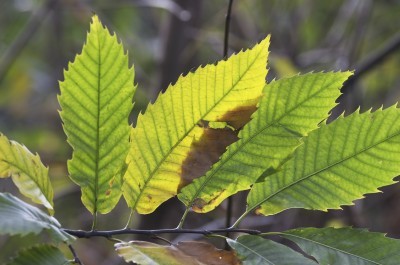






Leaves are one of the most important plant parts. They are crucial to gathering energy, respiration and protection. Leaf identification is helpful in classifying the variety of plant and its family. There are different leaf types, exemplified by their form and shape as well as other characteristics. Leaf types and arrangements can give insight into why positioning is important for photosynthesis and overall plant vigor.
Leaves have many aspects at which to look during the identification process. The different leaf types all have specific purposes and adaptations to help the plant thrive in its native terrain. It is important to look at all parts of the leaf including:
The most obvious aspect to examine is the shape of the leaf. If it is an uninterrupted shape, it is simple. If the shape divides into smaller leaf sets the leaf is compound. Identifying plant leaves that are compound divides them into subsets.
The arrangement of a leaf refers to how it grows on the stem. Some leaves grow opposite, some alternate, some in rosette forms and others in whorls. Each arrangement changes the way light plays across the photosynthetic cells. The leaf may attach with a petiole, a shortened stem, or it may be sessile (meaning stem-less).
The arrangement gives part of the clue as to the species. Venation is one more clue. Venation is the etched veins in the leaf surface. They may be:
Color and texture are two other methods of categorizing foliage. In addition, you can look at any discrepancy in the leaf margin. The edges of leaves may be smooth, toothed, lobed, incised, or wavy. The degree of any of these conditions varies as well.
Needle-like leaves also have distinguishing arrangements and shapes. Conifers may be scale-like, awl shaped, single, linear, bundled or clustered. The arrangement of the needles on the stem is also important.
The texture of the leaf is yet another aspect at which to look. Some things to note here include whether it is it firm and waxy, shiny, thick, stiff, limp, etc. Let your fingers do the walking and identify if the leaf has resinous glands, prickly thorns, or fine hairs.
There are many more fine distinctions for professional botanists, but these basics are generally good enough for most leaf identification for the common gardening enthusiast.
Phalaenopsis - 4 plants all acting different
Learn About Different Type Of Soil Texture
Learn About Fertilization For GreenHouse Plants
Identifying Flowers: Learn About Flower Types And Inflorescences
What Is A Native Plant: Learn About Native Plant Benefits In The Garden
All About Common Tree Diseases
Growing Pitcher Plants: Learn About The Care of Pitcher Plants
Copyright © www.100flowers.win Botanic Garden All Rights Reserved